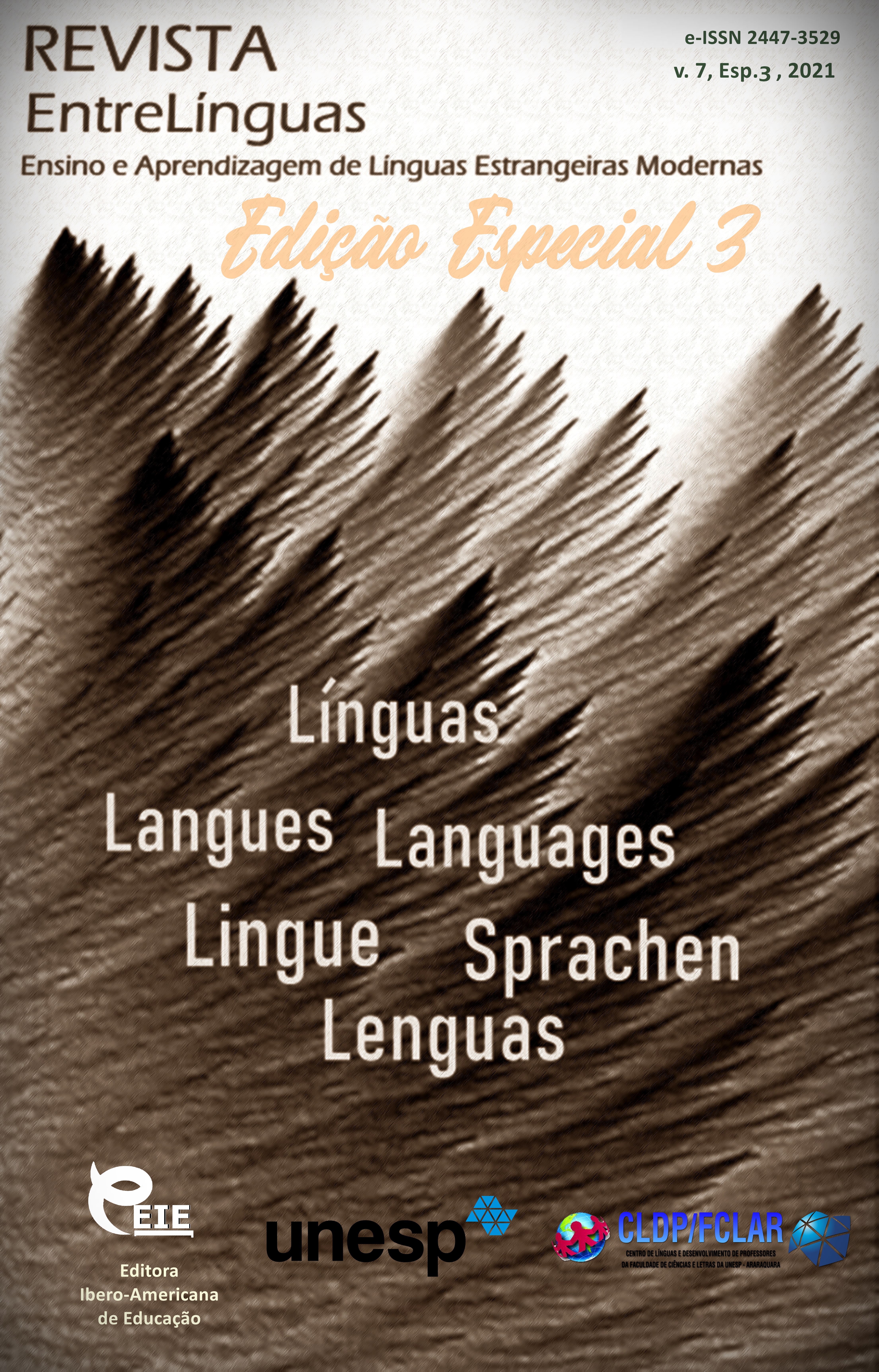A comparative analysis of the expressions of giving and receiving in the tatar and japanese languages
DOI:
https://doi.org/10.29051/el.v7iesp.3.15697Keywords:
Comparative linguistics, Tatar language, Japanese language, Phrases of giving and receiving, JujuhyougenAbstract
Comparing two languages may lead to results that would help to deeper understand both languages under analysis and may be helpful to see the language from a new side. The results which are achieved by the comparative method, showing common features of the languages being compared, make the process of studying a foreign language easier. As the Tatar speaking audience does not commonly study Japanese language, studying it through the mother language can make the process of studying and acquisition less difficult. Being the representatives of agglutinative languages, the Tatar and the Japanese have common features that have to be studied by the comparative linguistics. This article deals with the constructions, which consist of verbal adverb and modal verb in Tatar and Japanese languages whose meaning is to give/to receive. Such constructions are analyzed and compared in terms of their grammatical form, semantics and considered through the lens of cultural linguistics.
Downloads
References
ALPATOV, V. M.; ARKADYEV, P. M.; PODLESSKAYA, V. I. Teoreticheskaya grammatika yaponskogo yazyka [Theoretic grammar of Japanese language]. Moscow, 2008. 336 p.
GLUSHKOVA, S. Y.; TKHOMPIRA, C.; SILAKOVA, S. A. Standard informative and expressive language tools in publicistic and journalistic texts of newspapers in the Chinese and Thai languages. Journal of Sociology and Social Anthropology, v. 10, n. 4, p. 214-218, 2019.
IBATULLINA, D. G.; ALIKBEROVA, A. R.; NASIROVA, S. A.; Modern linguistic trends in the japanese language. Journal of Research in Applied Linguistics, v. 10, p. 163-168, 2019.
ZAKIEV, M. Z. Tatarskaya grammatika v tryoh tomah [The Tatar grammar in 3 volumes]. Kazan: Tatarskoe knizhnoe izdatel’stvo, 1993. v. 2, 383 p.
Published
How to Cite
Issue
Section
License

This work is licensed under a Creative Commons Attribution-NonCommercial-ShareAlike 4.0 International License.
Os manuscritos aceitos e publicados são de propriedade da Revista EntreLínguas. Os artigos publicados e as referências citadas na Revista EntreLínguas são de inteira responsabilidade de seus autores.
Transferência de direitos autorais – autorização para publicação
Caso o artigo submetido seja aprovado para publicação, já fica acordado que o(s) autor(es) autoriza(m) a UNESP a reproduzi-lo e publicá-lo na EntreLínguas, entendendo-se os termos “reprodução” e “publicação” conforme definição respectivamente dos incisos VI e I do artigo 5° da Lei 9610/98. O artigo poderá ser acessado pela rede mundial de computadores (Internet), sendo permitidas, a título gratuito, a consulta e a reprodução de exemplar do artigo para uso próprio de quem a consulta, desde que haja a citação ao texto consultado. Essa autorização de publicação 328 EntreLínguas, Araraquara, v. 1, n .2, p. 323-328, jul./dez. 2015 não tem limitação de tempo, ficando a UNESP responsável pela manutenção da identificação do(s) autor(es) do artigo. Os artigos publicados e as referências citadas na Revista EntreLínguas são de inteira responsabilidade de seus autores.











